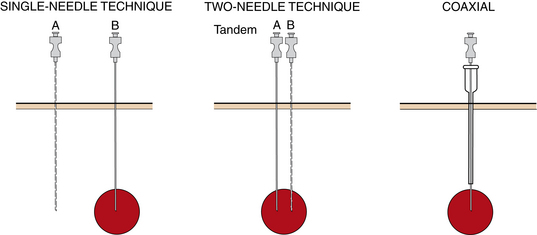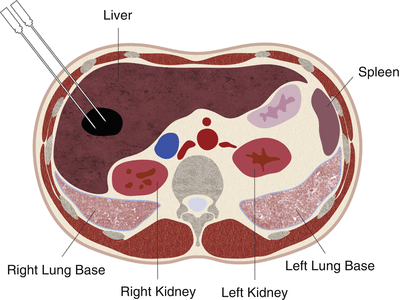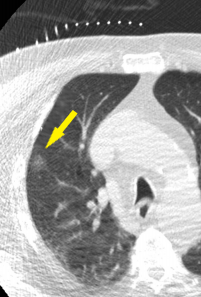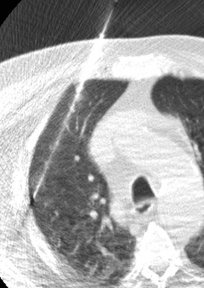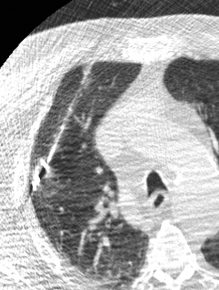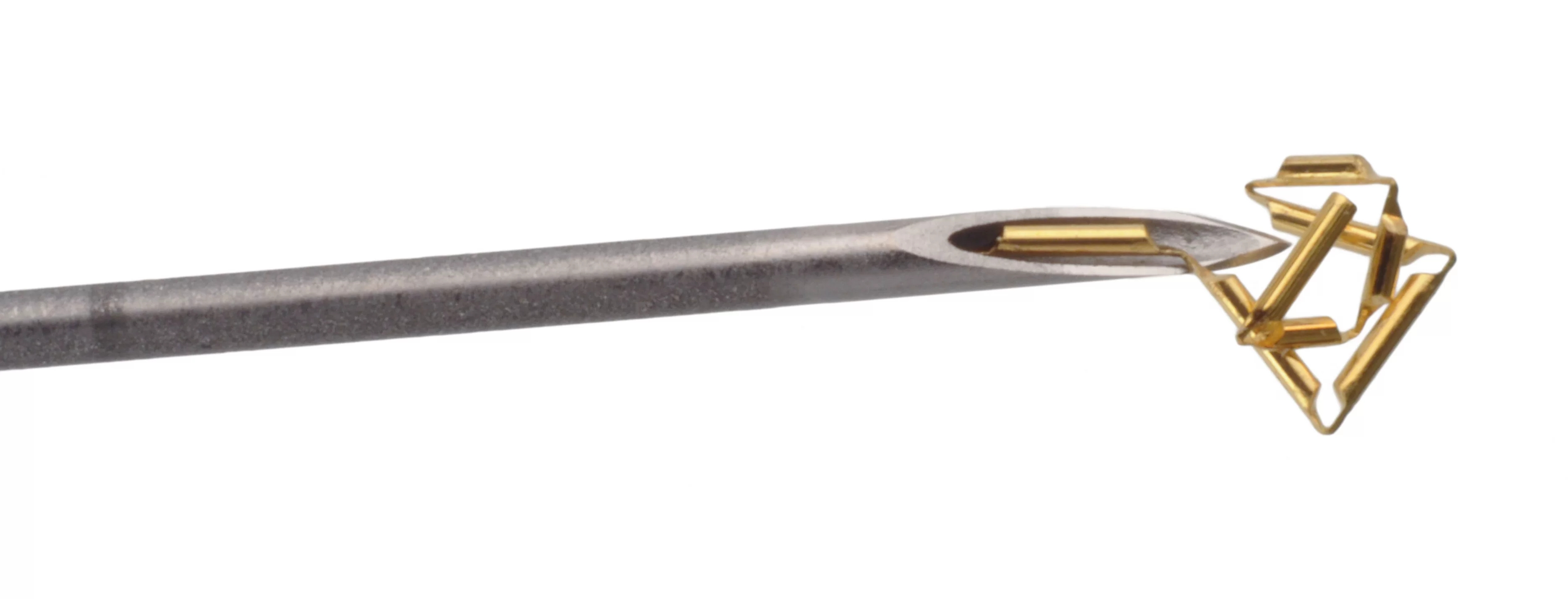图像引导肺穿刺活检可实现肺部病理的微创诊断。在疑似恶性肿瘤的情况下,活检不仅可以确认诊断,还可以进行分子分析,这是量身定制的全身治疗所必需的。针活检也可以描述非肿瘤实体,如对治疗无反应的感染和其他炎症过程。成功和安全的肺穿刺活检始于病灶和患者的选择以及仔细的术前评估。 在这里,编者就肺活检技术上考虑进行方法描述和连续的操作步骤,以最大限度地提高产量和患者安全的目标。 我们讨论了预防并发症的技术技巧,如胸膜麻醉、盐水密封、血液贴片、香蕉弯、水解剖和快速出针/患者翻转操作。 我们还回顾了如何管理并发症,避免非诊断性活检,并为术后观察和影像学随访提供建议。 A coaxial technique of inserting a thinner sampling needle through a larger needle placed at the edge of the lesion has a number of theoretical advantages over tandem punctures.
同轴引导穿刺活检技术,将取样穿刺针通过直径较大引导针置于靶病变的边缘。与双针穿刺(Tandem puncture)相比具有许多理论上的优势。
A number of samples can be obtained without re-puncturing the pleura (until such time as the introducer needle lumen develops a high degree of friction from the accumulation of coagulated blood).
可以在不重新穿刺胸膜的情况下获得大量样本(直到引入针腔因凝固血液的积累而产生高度摩擦)。
This theoretically improves speed and reduces pain and puncture-related complications.
这在理论上提高了速度,减少了疼痛和穿刺相关的并发症。
The depth of the sampling passes can be planned, and the stiffer, larger needle can enable additional torque and better steerability during manipulation.
取样通道的深度可以被计划出来,而更硬、更大的针可以在操作过程中增加额外的扭矩和更好的可操纵性。
If a pneumothorax does occur, the introducer needle often will remain lodged in the lesion, allowing further samples to be obtained.
如果确实发生气胸,引入针通常会停留在病变内,以便获得进一步的样本。
A properly selected larger-bore needle can be used to obtain a biopsy gun specimen, insert a marker into the lesion for thoracoscopic resection or radiation therapy, or deliver a substance to caulk the tract (discussed below).
可以使用适当选择的大口径针来获得活检枪标本,将标记物插入病变中进行胸腔镜切除或放疗,或提供一种物质来堵塞通道(下文讨论)。
Each puncture site has a certain pressure above which air will leak into the pleural space.
每个穿刺部位都有一定的压力,超过这个压力空气就会泄漏到胸膜腔,形成气胸。
Performing a single puncture decreases the chances that one will leak at a relatively low intrathoracic pressure and cause a pneumothorax.
进行单次穿刺可以减少在相对较低的胸内压力下泄漏并引起气胸的机会。
Most small puncture wounds to the pleura leak at 10-40 mm Hg.
大多数胸膜的小穿刺伤口在10-40毫米汞柱处泄漏。
A coughing fit(咳嗽发作) will generate pressure in excess of 100 mm Hg, due to which all nonpatched and probably most patched punctures would leak.
咳嗽会产生超过100毫米汞柱的压力,因此所有未修补的、而且大多数修补的穿刺损伤都可能会气体泄漏导致气胸。
Visible tearing of the pleura allows leakage at a pressure of 1-2 mm Hg.
可见的脏层胸膜裂伤(通常是穿刺针尖停留在肺脏层胸膜表面时的划伤),即使在1-2毫米汞柱的压力下,胸膜会出现渗漏。【Moore 1998】
A single puncture non-coaxial approach should be considered for high-risk circumstances, such as for a transcaval or trans brachiocephalic vein approach for lesions known to have hemorrhaged or suspected to be at high risk for hemorrhage and lesions with an associated prominent internal air-bronchogram in which there is an increased risk of air embolism.
单穿刺非同轴方法应考虑高危情况下,如经腔静脉或跨头臂静脉方法病变已知出血或疑似高危出血和病变相关的突出内部支气管图有空气栓塞的风险增加。
| ||||||||||


